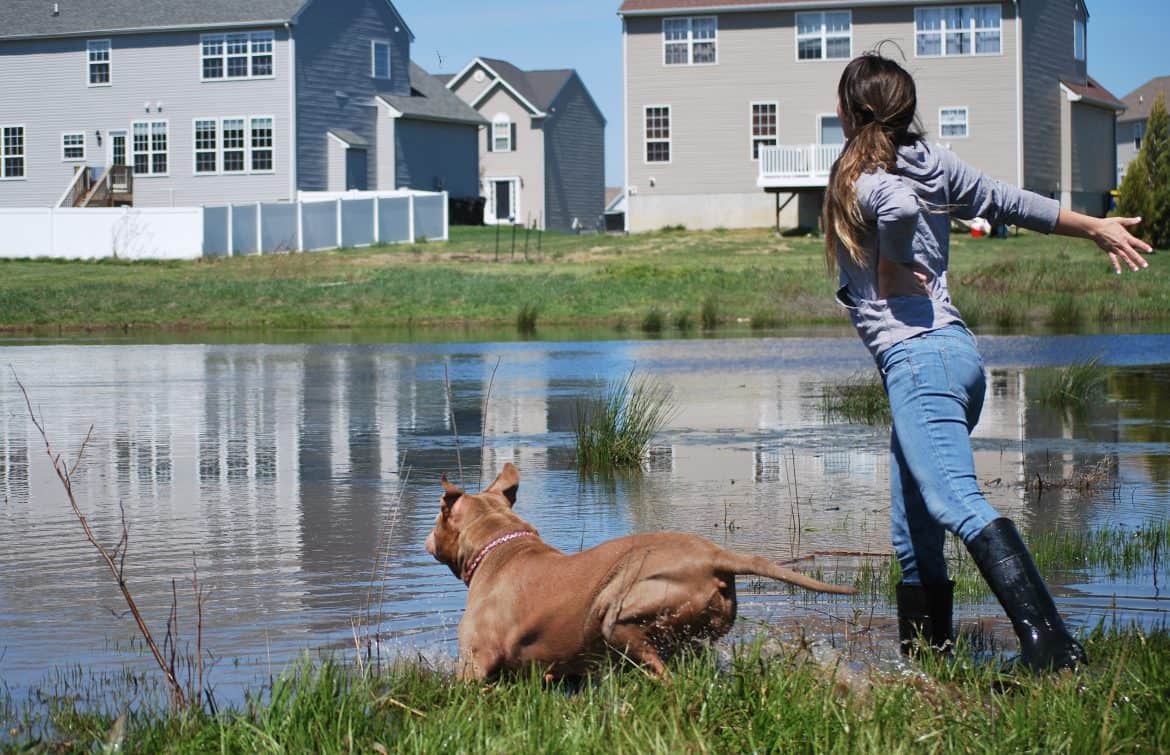Are you wondering how to cure heat strokes in dogs? You have come to the right place.
As summer temperatures climb, all dog owners must be aware of the serious risks of heat stroke. Also known as hyperthermia, this life-threatening condition occurs when a dog's body cannot properly regulate its internal temperature. Without prompt treatment, heat stroke can quickly lead to organ failure, brain damage, and even death.
Recognizing the early warning signs and responding is key to protecting your canine companion. Heat stroke progresses through distinct stages, each with its own set of symptoms that require immediate attention. Fortunately, the dog heat stroke survival rate is fairly high with fast action and proper care. This comprehensive guide will cover everything you need to know to prevent, identify, and effectively treat this dangerous summer hazard.
What are the Three Stages of Heat Exhaustion in Dogs?
1. Mild heat exhaustion
The first stage is mild heat exhaustion. In this early phase, you may notice your dog panting excessively, drooling more than usual, and appearing lethargic or weak. Their gums may also appear bright red. These are all signs that your dog's body is starting to overheat and struggle to cool itself down.
2. Moderate heat exhaustion
As the heat stroke progresses to the moderate stage, the symptoms will become more severe. Your dog may start vomiting, have diarrhea, or even collapse. Their body temperature will climb dangerously high, often exceeding 104°F. At this point, immediate veterinary treatment is critical.
3. Severe heat exhaustion
In the final, most dangerous stage of heat stroke, the dog will become unresponsive and may even suffer organ failure or seizures. Unless they receive prompt, comprehensive medical care, dogs in this advanced stage of heat stroke are at a very high risk of suffering brain damage or dying.
Can Dogs Survive Heat Stroke?
The good news is that with fast action and proper treatment, the dog heat stroke survival rate is fairly high - around 50-90%, depending on the severity of the case. However, it's still an exceptionally dangerous and life-threatening condition. That's why it's so important for all dog owners to be able to recognize the early warning signs and know exactly how to respond.
How Can I Cool My Dog Down Quickly?
If you suspect your dog may be experiencing heat stroke, your first priority should be to start lowering their body temperature as quickly as possible. Get them to a cool, shaded area right away, and use cool (not cold) water to wet their fur, especially around the head, neck, and paws. You can also place ice packs or cool, wet towels on these areas.
You mustn't submerge the entire dog in cold water, as this can actually cause their temperature to drop too rapidly and lead to additional medical complications. Stick to just wetting their coat and applying cool packs to the key heat-releasing areas of their body.
How to Cool an Overheated Dog?
In addition to cooling your dog down physically, you'll also want to contact your veterinarian immediately. Heat stroke requires professional medical treatment, and your vet may recommend bringing your dog in for intravenous fluids, medications, and close monitoring. In severe cases, hospitalization may be necessary.
Your vet will likely start by trying to lower your dog's temperature using a variety of techniques, including:
- Providing IV fluids to help rehydrate and stabilize them
- Administering medications to reduce brain swelling and inflammation
- Using fans, ice packs, and cool water to gradually lower their body temperature
- Closely monitoring their vital signs and organ function
Depending on the severity of the heat stroke, your dog may need to be hospitalized for a period of time so the vet can continue providing intensive treatment and care. The goal is to lower their temperature safely and carefully, while also addressing any underlying organ damage or other medical issues caused by the heat stroke.
Can You Revive a Dog from Heat Stroke?
With prompt, proper treatment, most dogs can make a full recovery from heat stroke. However, the prognosis does depend heavily on how quickly the dog received care and how severe the heat stroke was. Dogs who are treated in the mild, early stages have a much better chance of survival compared to those who reach the advanced, life-threatening stages before getting help.
How Long Does it Take for a Dog to Recover from a Heat Stroke?
The length of recovery can vary quite a bit depending on the individual case. In mild cases where the dog was quickly cooled down and received early veterinary care, they may be able to make a full recovery within a few days to a week. However, for more severe heat stroke cases that involve organ damage or neurological issues, the recovery process can take much longer - potentially several weeks or even months.
During the recovery period, the dog will need to be closely monitored by their vet. They'll likely be put on medications to address any lingering effects of the heat stroke, like organ dysfunction or brain swelling. Physical rehabilitation may also be recommended to help rebuild the dog's strength and stamina.
Pet owners must follow their vet's instructions to the letter during this recovery phase. Pushing the dog too hard or allowing them to overexert themselves before they're fully healed can seriously setback their progress and put their health at risk. Slow, steady rehabilitation under the vet's guidance is key.
How Can I Tell if My Dog Died from Heat Stroke?
In tragic cases where a dog succumbs to heat stroke, there are a few key signs that indicate this was the cause of death. The most obvious is an extremely high body temperature, often over 107°F. Dogs who die from heat stroke may also exhibit signs of organ failure, such as lethargy, vomiting, diarrhea, or seizures in the final stages.
Unfortunately, heat stroke can progress extremely rapidly and be fatal even with the best medical intervention. If a dog reaches the point of coma or complete organ shutdown, their chances of survival become very slim. In these advanced, end-stage cases, the prognosis is often dire.
How to prevent Heat Stroke in Dogs
The best approach is to avoid heat stroke altogether by taking proactive steps to keep your dog safe and cool in hot weather. Some key tips include:
- Never leave your dog unattended in a vehicle, even with the windows cracked. Cars heat up incredibly fast and can reach deadly temperatures in minutes.
- Providing plenty of shade and cool water when your dog is outside. Make sure they have access to a cool, shaded area to rest.
- Limiting exercise and activity on sweltering, humid days. Mornings and evenings are better times for walks and playtime.
- Consider doggy clothes or accessories that can help keep them cool, like cooling vests or mats.
- Watch for signs of heat stress and acting quickly if you notice your dog panting heavily, drooling excessively, or seeming lethargic.
With a little extra caution and vigilance, you can help ensure your canine companion has a safe, happy, and healthy summer. But if the worst should happen and your dog does develop heat stroke, knowing the warning signs and proper first aid steps could quite literally save their life.
Heatstroke in Dogs Treatment at Home
As mentioned, quickly lowering your dog's body temperature is the first crucial step in treating heat stroke. The best way to do this at home is by using cool (not cold) water to wet their fur, especially around the head, neck, and paws. You can also place ice packs or cool, wet towels in these areas.
Avoid submerging your dog in cold water, as this can cause their temperature to drop too rapidly and lead to additional medical issues. Stick to gently wetting their coat and applying cool packs to key heat-releasing points on their body.
Once you've started the cooling process, contact your veterinarian immediately. They may advise you to continue the cooling efforts while en route to the clinic, or they may recommend bringing your dog in immediately for more advanced treatment. Either way, getting that professional medical care as fast as possible is critical.
While you should always consult a veterinarian for any suspected heat stroke, there are some initial first-aid steps you can take at home to start lowering your dog's body temperature:
- Move them to a cool, shaded area out of direct sunlight.
- Use cool (not cold) water to wet their fur, especially around the head, neck, and paws. Avoid submerging them in cold water.
- Place ice packs or cool, wet towels on their head, neck, and paws.
- Encourage them to drink small amounts of cool water, but don't force them.
- Stop any physical activity and allow them to rest.
- Monitor their breathing, body temperature, and overall condition closely.
Continue these cooling efforts while also contacting your veterinarian immediately. They may advise you to keep cooling your dog while en route to the clinic, or they may want you to bring them in immediately for more advanced medical treatment.
Either way, getting that professional help as fast as possible is critical. Heat stroke is a severe, life-threatening condition that requires prompt, comprehensive care. With quick action and the right treatment, many dogs can make a full recovery. But time is of the essence, so don't delay in seeking veterinary attention.
Dog Heat Stroke Survival Rate
With prompt, proper treatment, the dog heat stroke survival rate is fairly high - around 50-90%, depending on the severity of the case. However, heat stroke is still an exceptionally dangerous and life-threatening condition.
Dogs who receive treatment in the early, mild stages have the best prognosis, with a survival rate as high as 90%. But the outlook becomes much more guarded for those who reach the more advanced, critical stages before getting care. The survival rate can drop to 50% or even lower in these severe cases.
Ultimately, the key factors that determine a dog's chances of surviving heat stroke include:
- How quickly the heat stroke was recognized and treatment began
- The dog's overall health and age (younger, healthier dogs fare better)
- How high their body temperature climb and for how long
- Whether they developed any organ damage or neurological issues
- The speed and effectiveness of the cooling and stabilization efforts
Conclusion
With vigilant monitoring, fast action, and prompt, comprehensive veterinary treatment, many dogs can make a full recovery from even severe cases of heat stroke. But it's a serious, life-threatening condition that requires immediate care. That's why all dog owners need to be able to recognize the warning signs and know how to provide critical first aid before rushing their pets to the vet.

